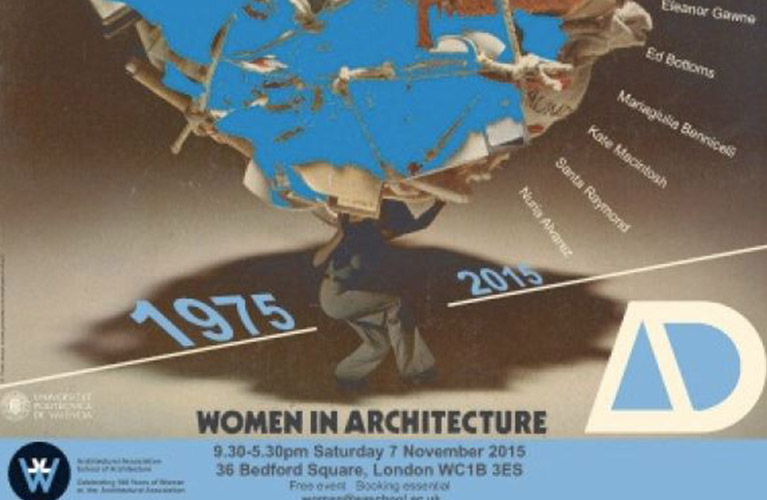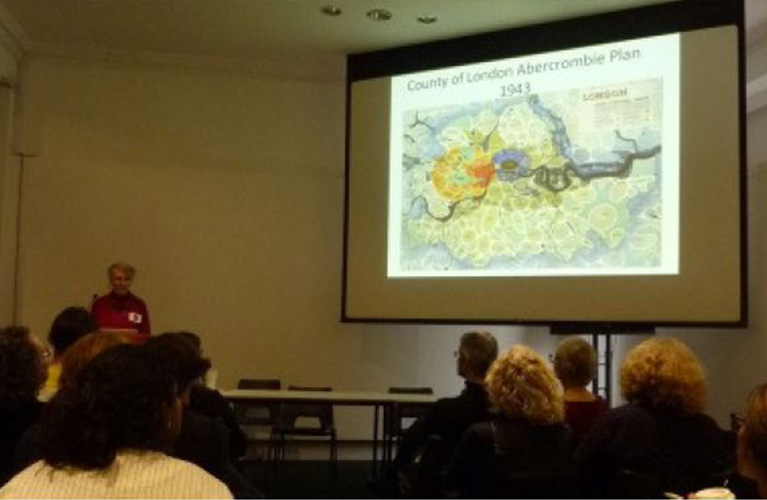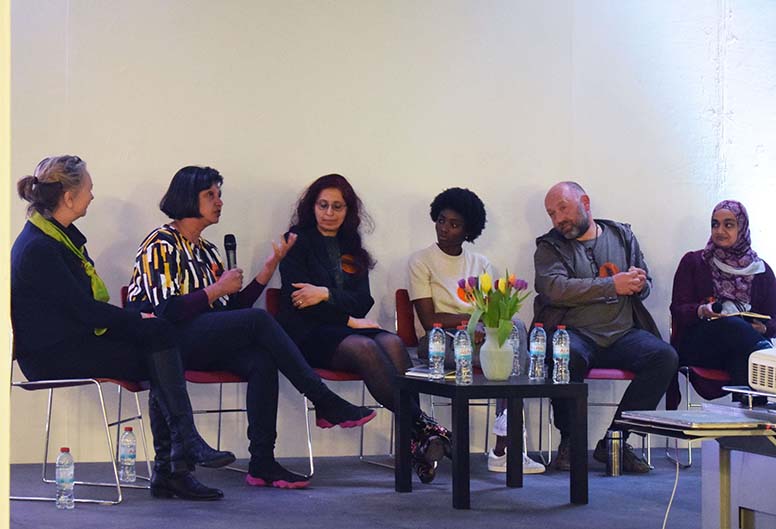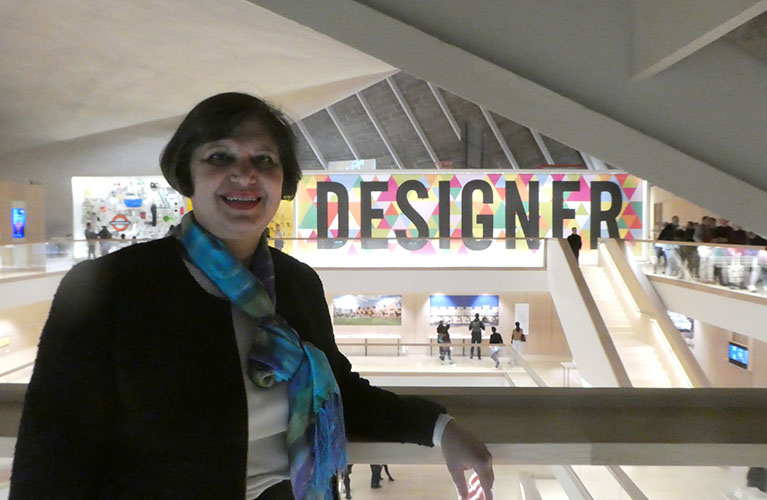AA-AD Conference: Women in Architecture
10 Nov 2015 - Blog
Published in the Architects Journal 10 November 2015, Architects Journal
Yasmin Shariff reviews a day of talks celebrating I00 years of women at the Architectural Association
Organised by AA XX 100 in collaboration with Architectural Design (AD), the conference Women in Architecture Forty Years on… was part of a series of ongoing events that celebrates a centenary of women at the Architectural Association (AA). It marked the fortieth anniversary of AD’s August 1975 special issue, Women in Architecture. The event showcased a number of remarkable women who are challenging and changing practice, research, media and technology in the virtual and built environment as well as evaluating what has changed in the last forty years.
It took a suffragette to fight for the right for women to enrol at the AA.
The conference coincided with the release of the film Suffragette and it is perhaps no coincidence that it took a suffragette, Ruth Lowy, to fight for the right for women to enroll at the AA. Following considerable lobbying and after much discussion at an AA Council meeting on 19 June 1917 it was agreed that Lowy could enroll in September that year, subject to members agreeing a change to the bylaws. On March 1918, Winifred Ryle wrote a compelling article in the Architectural Association. Journal on ‘ Women as Architects ‘. Ryle stated that ‘In the near future the woman-architect will be, not only a vague possibility but an absolute necessity; just as the woman-guardian and town councilor, the woman-police, and the lady-doctor have already proved to be.’ Nearly sixty years later in 1975 when Monica Pigeon was ‘egged on by deputy editor Barbara Goldstein and other women libbers at the AA’ to devote an issue of AD to Women in Architecture, there were only six percent female architect members of the RIBA – clearly women were not yet an absolute necessity.
The event, which was held on Saturday (7 November) was loosely structured around the contents of the 1975 issue to try and tease out what has changed over the past forty years, including the survey and themes around women in practice, institutions, sculpture, landscape, projects and academia. The early morning session was devoted to the 1975 issue and Pigeon. Barbara Goldstein and Eva Alvarez, assistant professor at the Department of Architectural Projects at the Polytechnic University of Valencia, discussed the content of the issue in a skyped interview. Alvarez personally identified with the powerful image on the cover, of a woman in trousers carrying the weight of all the garbage in the world. In the interview between Alvarez and Goldstein described how the magazine was put together and launched in the ‘silly season’ (August) with all the staff dressed in white – like ‘vestal virgins’. She explained how the graphics captured the enthusiasm of the graphic designers with special footwear penned for each section.
Alvarez had reformatted the survey that was a central feature of the 1975 AD issue for the audience to fill out. The original survey was undertaken by writing to 100 women architects to find out what the perceived differences were between genders. The conclusion was that, ‘One and all, they agreed with us that architects were good or bad regardless of sex – or race, colour, sexual preference, build, or what you will’.
Helen Castle (the current editor of AD) and Peter Murray (formerly a technical editor of the magazine) fleshed out Pigeon’s career and personality. What came over was a person larger than life, well connected, widely travelled, hardworking and a talented photographer handy with a Rolytlex. Pigeon’s social concerns and her role in the UIA , MARS Group, CIAM and Team 10 translated into the ecological themes and content of the issues that she published from 1946 to 1975, including work by John Turner, Buckminster Fuller, Aldo van Eyke and the Smith sons. Castle described how Pigeon had, in her own words muddled through – ‘The power of women muddling through, though , should not be under estimated. It is the women chipping away with their head s down that effects change, enables success and creates influential role models.’ Castle questioned if all that muddling through enabled a critical mass and if we were at a watershed moment for women in architecture?
You can’t know how tough it was for these women Clare Devine, director of CABE at the Design Council in her presentation that followed highlighted the significant contribution made by women like Mary Crowley, Rosemary Stjernstedt and Corrinne Bennett, that has been largely ignored and unrecorded in history books. Crowley (together with her husband David Mcdd) wrote many of the Building Bulletins which set out the criteria for designing schools and designed many of the award winning schools which made the Hertfordshire Architects Department world famous. Stjemstedt was the first woman architect to reach Senior Grade One status at the London County Council. She worked on a number of significant projects including Rochampton. Bennett was the first National Cathedral Architect to be appointed by English Heritage and was at the forefront of pioneering research into stone conservation and cleaning. Her quote from Catherine Cooke created a powerful context for the session, ‘you can’t know how tough it was for these women, but they carried it lightly, with humour, resilience and a real passion to make a better environment for those who lived in poverty without promise. We should only remember we stand on the shoulders of many quiet, determined and discrete revolutionaries who changed the face of this country for the better.’
Kate Macintosh, whose grade II-listed project Leigham Court was featured in the original issue, spoke about her work in the public sector and the income inequality of women in the UK (third worst in the world). She made a plea to save one of the projects by Rosemary Stjemstedt in Lambeth – Central Hill. Urbanism and landscape seemed to be a way that many women have managed to forge successful careers. Lucy Bullivant’s quote from Liza Fior ‘the soft stuff is the hard stuff’ hit home as she described her webzeen Urbanista, dedicated to urban design and adaptive planning and Urbanistas a project that exhibited five practices whose work spans architecture, landscape and urban design.
Mary Bowman’s presentation outlined her career at Foster Associates and the Richard Rogers Partnership before going into partners hip at Gustafson Porter. Her landscape projects included the memorial for Princess Diana, a metropolitan park in Jeddah and Gardens by the Bay in Singapore revealed a wealth of creative ideas and technical prowess. Sculptor, Helaine Blumenfeld who exhibited with Henry Moore in New York in 1985, described her initial difficulties as a woman working in the marble workshops at Pietrasanta, Italy whilst illustrating her breath-taking projects. After the lecture several AA students volunteered as interns and asked if they could see her work.
AA students and staff were presented by Nuria Alvarez, co-director of Canates & Lobardero and intermediate unit tutor. Her presentation illustrated how women are being written out of history with only I0 percent of women being listed in the wiki pages of current and former teachers. Many of the AA students that she featured are fiercely independent women who have already founded their own companies including Sophia Alami WATCH (We Are The Children) and Frederic a Zambelelli cofounder of KooZ A/rch (described as a visionary platform for architects and the curious). Staff that were presented are also directly involved in practice including Naiara Vegara (director of Fundacion Metropoli Cities Lab London), Nathalie Rozencwajg (co-founder of RARE Paris-London) commended as the AJ Emerging Woman Architect of the Year in 2012, Dora Sweijd (co-founder of LASSA Architects) and Manja van de Worp (principal of Nous Engineering, London).
The finale of the conference was the work of Julia Barfield. Her modest manner and sincerity was humbling. She started and ended her presentation with Lark Hall, a public park which she is currently trying to save from vicious government cuts in public expenditure. The London Eye and Kew walkway, both significant technical feats were glossed over in a way that made them seem as though they were just part of the course.





